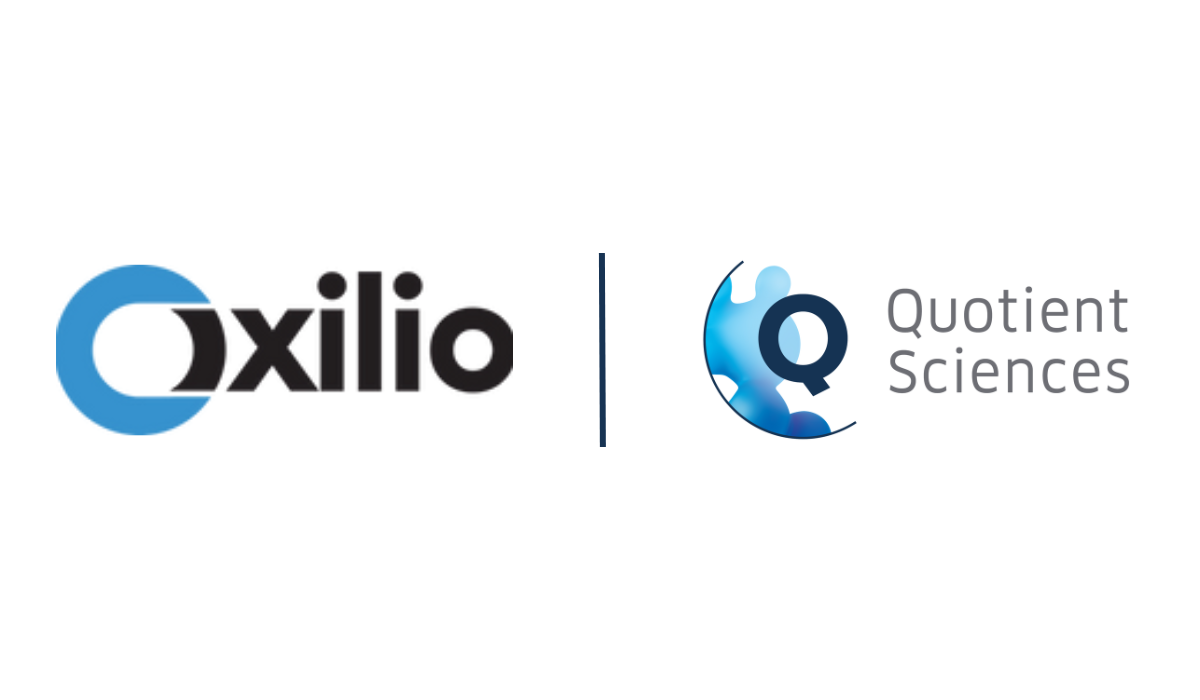When it comes to Quality Assurance (QA), what are some of the major challenges that have been impacting the pharmaceutical industry lately?
The competition for high-quality QA professionals has always been an industry challenge, but since the pandemic, this has been exacerbated. With so many pharmaceutical companies competing for qualified candidates, turnover has increased, competition for resources is high, and compensation demands continue to rise. The job market has changed, with more individuals seeking work-from-home opportunities. Remote work can be difficult to offer for many QA roles in a clinical research organization (CRO) or a contract development and manufacturing organization (CDMO) where real-time, “on-the-floor” interaction is needed with clinical or manufacturing colleagues, and with customers and regulatory agencies.
Service providers that Quotient Sciences partners with have shared that they too are experiencing the challenges of turnover and high absenteeism. These strains can result in longer lead times, higher error rates, potential delays, and increased costs, which can impact the customer. At Quotient Sciences, we are focused on minimizing the impact that these challenges may have on our customers, and we strive to deliver the highest degree of quality for each program. We proactively take actions to minimize risks and conduct thorough investigations into any discrepancies, ensuring that corrections are implemented, and actions are taken to mitigate the potential for recurrence.
The increased focus by many sponsors on developing new drugs that fulfill unmet medical needs or provide improved outcomes over currently available therapies has required CDMOs and CROs to seek ways to shorten timelines without compromising on quality or compliance. This in turn requires QA to drive quality system efficiency and support the delivery of integrated services aimed at reducing drug development timelines.
In drug development and manufacturing, what role does Quality Assurance & Compliance play? What makes it so important, not just for the contract service provider or the sponsor but for the patient as well?
The Quality Assurance & Compliance function (herein termed “QA”) fulfill a number of crucial roles supporting drug development and manufacturing. QA is accountable for staying abreast of applicable global regulatory requirements and expectations and translating these into fit-for-purpose policies and procedures used by all colleagues to deliver safe and effective products. In a contract organization, QA also works with sponsors to ensure that their requirements are understood and integrated into any project-specific activities. QA maintains oversight of Good x Practice (GxP) work performed across the organization, ensuring that it is conducted in a compliant manner and serving as a coach and mentor for all colleagues to help ensure that they understand expectations and guide them on how to deliver quality in their roles. When quality issues arise, QA also serves as a risk manager. They collaborate with subject matter experts, which includes the sponsor, to evaluate risks and ensure the actions taken are commensurate with the level of risk, while consistently prioritizing the needs of the patient. The maximum effectiveness of QA’s role is best achieved when they serve as an engaged partner to the business, working collaboratively with all internal functions and externally with the sponsor, to proactively build quality into products and services. These actions ensure that quality and compliance objectives are integrated with business objectives, which benefit the contract service provider, the sponsor, and ultimately the patient.
What keeps you up at night when it comes to some of the major Quality Assurance & Compliance predicaments in the drug development and pharmaceutical industry?
A few challenges that drug development organizations are facing today that keep me as a Compliance leader up at night include retention of a qualified workforce, the constant need for speed and agility, supply chain disruptions, and inflation and its impact on rising costs.
Turnover is a major issue impacting our industry. To adapt to current workforce needs, employers are forced to reassess how work gets done. It is essential for businesses to respond quickly to retain their qualified workforce, but these types of changes must also be thoroughly considered so as not to create more business complexity or add long-term costs that cannot be effectively managed. The increased need for speed and agility in all aspects of operations adds additional strain on the workforce that can further compound the retention concern.
Supply chain disruptions continue to impact the pharmaceutical industry. These challenges increased during the pandemic and have been further exacerbated recently due to other geopolitical events, resulting in delays in accessing materials needed to deliver drugs to patients in need and progress development of new drugs. Organizations may need to quickly identify and qualify alternate materials or vendors, develop and qualify or validate new systems and processes, and deliver finished products under more stringent timelines. This is another example where speed and agility are essential but can also result in unanticipated errors. Quality management systems must be capable of facilitating agile working while still maintaining robust controls to detect deviations.
Inflation and its impact on rising costs is another major challenge. Costs associated with materials, labor, utilities, and distribution continue to increase, which can impact an organization’s top-line growth and reduce cash needed for forward-thinking investments. Leaders must continue to seek opportunities to reduce costs, improve processes, reduce waste, and leverage technology to deliver products and services. Quality and compliance must remain a strong consideration when driving these improvements.
Can you tell us about the latest quality systems or compliance project that you have been working on, and what are some of the technological and process elements that you leveraged to make the project successful? How will it benefit not only Quotient Sciences but also the customer?
One of the most significant recent investments in quality systems at Quotient Sciences was the implementation of an electronic document management system (eDMS) and quality management system (eQMS). Quotient Sciences recognized the need to establish an integrated quality management system that provided real-time visibility to documents and data, improved metric reporting and analysis, was easy to maintain, and was scalable to grow with our business. Veeva Vault was our chosen solution.
Veeva has served as a common platform for harmonized processes across all Quotient Sciences sites, which include but are not limited to the management of controlled documents, deviations, customer complaints, change control, and corrective and preventive actions. These processes enable Quotient Sciences to deliver a harmonized customer experience and shorter response times.
Since the implementation of Veeva in mid-2020, Quotient Sciences has continued to seek opportunities to expand system capabilities and continue our digital transformation of quality processes, with the focus on improving efficiency and effectiveness while maintaining compliance.
Which are some of the current and future technological trends that excite you in the Quality Assurance & Compliance arena that can better aid the drug development industry?
The drug development industry strives to remain on the cutting edge, continually seeking new or advanced therapies to fulfill unmet patient needs. Very few drugs that are in development make it to market. There is an immense amount of data produced for both successful and unsuccessful drugs alike. Seeing the emerging trend in industry to better utilize data to improve future drug development is incredibly exciting.
Predictive analytics may be used to help predict drug performance, thereby potentially reducing timelines for new drug development and increasing the success of clinical trials, while reducing risks to volunteers and patients. This tool can also improve manufacturing process robustness, thus increasing supply chain reliability and reducing time to market. Overall, this can result in shorter drug development timelines, reduced costs, and higher success rates. It can also lead to better and more consistent product quality. Most importantly, predictive analytics can result in improved therapies being made available to treat patients sooner.
The enormity of available data also supports advancements in data connectivity. Data silos have historically been common in drug development and manufacturing. Data resides in different sources that may be difficult to access and may not be easily combined with other data to provide a reliable holistic overview. Linking these separate data sets can help break down silos and improve delivery of the right data to the right people at the right time to support improved decision-making.
Silos do not just exist in data. They have also been common across the supply chain, which can result in delays and disruptions in moving a drug through the development process. It is exciting to see companies, such as Quotient Sciences, who are offering integrated services that can shorten development timelines and costs to get drugs to patients faster.
What Quality Assurance &Compliance standards should sponsor companies look for when selecting a contract service provider?
Prior to selecting a CDMO or CRO, sponsor companies should first seek to understand their own needs and priorities. Questions that sponsors should take into account include:
- To what extent are they looking to outsource versus manage internally?
- Are they looking for a company that has established systems and processes that will be used to execute the contract work, or will they be prescribing those processes?
- Are they seeking a supplier for limited transactional work, or are they looking to cultivate a partnership that will span many projects?
- Are they seeking the lowest-cost service provider or one that offers differentiated services capable of managing complex programs?
Once these needs are understood, the sponsor company should seek a partner with fit-for-purpose quality systems that provide flexibility, agility, and a strong compliance history. Other standards that sponsor companies should seek in their service provider include visible action-oriented metrics for quality, service, and delivery; a robust integrated Corrective and Preventive Action (CAPA) program with demonstrated effectiveness measures; and a robust quality management review program. Additionally, sponsor companies should look for a contract service provider that is collaborative and promotes sponsor-to-provider, function-to-function (e.g. sponsor QA to provider QA) interactions. This will ensure open communication at the right levels between both parties while driving strong collaboration.
Kimberly is an experienced compliance leader with over 25 years’ in life sciences. Combining her technical and leadership capabilities, she works to identify creative solutions that balance compliance and business risk to achieve business results that meet regulatory expectations. She has served in senior Quality leadership roles overseeing development, manufacturing, and distribution of pharmaceutical and medical device products supporting a broad range of therapeutic areas.
Kimberly received her BS degree in Mechanical Engineering from West Virginia University, a MS degree in Engineering Science and an MBA from Penn State University, and a graduate certificate in Pharmaceutical and Medical Device Law and Compliance from Seton Hall Law School.









